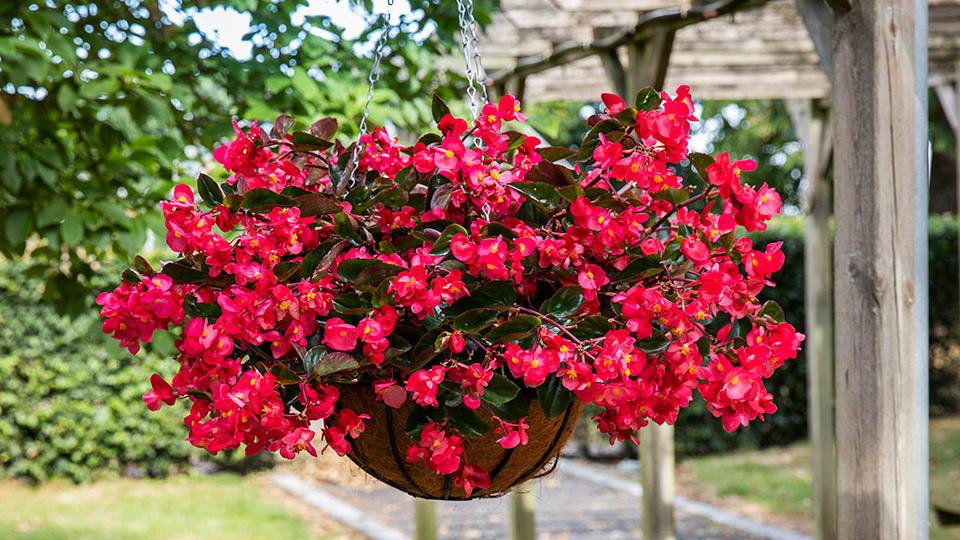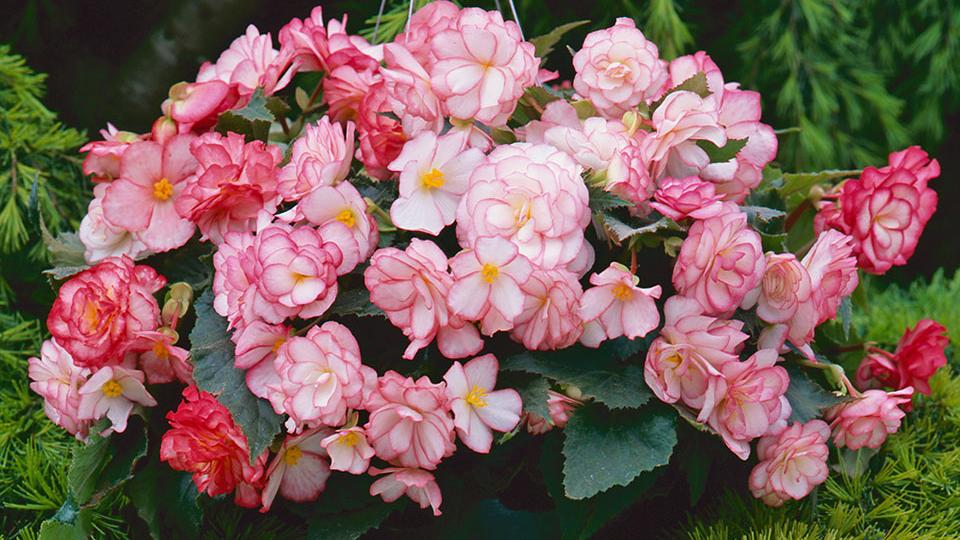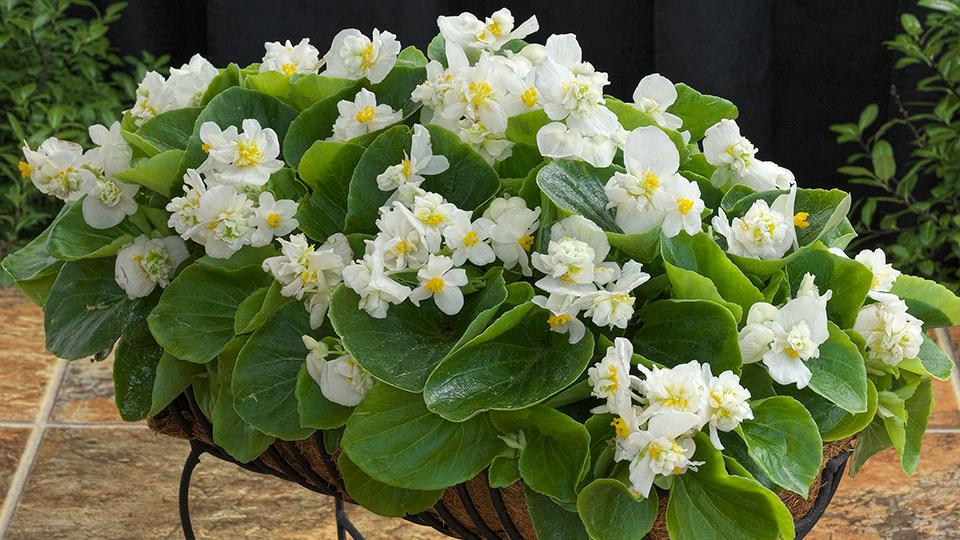Bright Ideas To Control Flowering In Begonias

Begonias with improperly timed flowering are a common problem for growers.
Photo courtesy of Sakata Ornamentals (pictured: Begonia ‘Viking Explorer Rose on Green)
Begonias are one of the most popular herbaceous plants grown during spring — and for good reason. If you are looking for a begonia to fit a specific need, you can probably find one that will do the trick. These bedding plant classics are commonly propagated from seed or rooted cuttings. Some begonias are well-suited for landscape beds, whereas some cultivars are best grown and shown in baskets or patio containers.
One consequence of this diversity in begonias is a large variety of products grown. Just look at container sizes, ranging from six-plant packs to 14-inch hanging baskets. We try to produce plants that are proportional to their container, as well as having a good ratio of flowers and foliage. Begonias with improperly timed flowering are a common problem — either delayed flowering resulting in overgrown plants, or early flowering when plants are small.
Depending on the species, one of several factors may influence flowering: photoperiod, light intensity, juvenility, temperature, and stress. However, the flowering requirements are different across the various types of begonias. This article will discuss how to control flowering for the most popular types of begonias.
Tuberous Begonias
Tuberous begonias are frequently grown as a hanging basket crop because of their colorful, pendulous flowers. However, since these crops are frequently produced in hanging baskets, it poses two challenges. First, crops produced in hanging baskets require a longer time to finish due to the larger container size. Alternatively, recently transplanted cuttings that begin flowering immediately will be producing flowers during the entire crop, diverting some energy from vegetative growth and dropping old flowers onto substrate, including those plants grown below hanging baskets.

Tuberous begonias are perfect for containers and hanging baskets. The longer the daylength, the more flowering is promoted.
Photo courtesy of Ball Seed (Begonia ‘On Top Pink Halo’ pictured)
The critical photoperiod for tuberous begonia is 12 hours. That is, photoperiods longer than 12 hours promote the growth of leaves and flowers. Alternatively, when the photoperiod is less than 12 hours, the plants will develop tubers; this comes at the expense of shoot growth and, therefore, flowering. The longer the daylength, the more flowering is promoted.
The effect of photoperiod on tuberous begonias is especially critical for early season production. To keep tuberous begonias from going dormant and forming tubers, begonias must be grown under long-day conditions in the greenhouse during days that are naturally short.
Reiger Begonias
Reiger, hiemalis, and elatior begonia are all different common names for the same plant. We commonly think of these plants as potted plants for indoors. However, they also make annuals that will flower well in shady locations. Reiger begonias differ from tuberous begonias in that there are a few more causes of flower induction.
Like tuberous begonias, reiger begonias are photoperiodic. However, they are classified as short-day plants. To maintain plants in a vegetative state, such as during propagation or after transplanting to bulk up vegetative growth, provide long days as described in the previous section. To induce flowering, provide short days. There are only two ways to have a short-day environment in a greenhouse: 1) when the day is naturally short; and 2) when black cloth is used to shorten the day. Use shade cloth that is aluminized on one side so heat from the late afternoon and evening sunb does not build up under the cloth.
Wax Begonias
Wax or fibrous begonias are most commonly grown for use in landscape beds. As such, wax or fibrous begonias are produced in packs and marketed in flats.
Premature flowering of wax begonias can be a problem. However, due to the fact that wax begonias are grown in small containers, a more common problem is plants that are too large because flowering was delayed and delayed marketability.

While flowering in wax begonias is not influenced by daylength, the amount of light the plant receives does affect flowering.
Photo courtesy of American Takii (Begonia semperflorens ‘Fiona White’ pictured)
Wax begonias are different than tuberous and reiger begonias in that flowering is not affected by photoperiod. While the length of the day does not affect flowering, the amount of light a plant receives does affects flowering. Although wax begonia can be grown in the shade in the landscape, the time to flower during production is usually shorter with increasing light intensity.
Cane Begonias
There are a few other types of begonias that are commonly grown, including the angel and dragon wing begonias. These begonias can also be called cane begonias, a reference to the stems that grow upright, Begonia aconitifolia and B. coccinea. Flowering of dragon wing begonias is promoted by short days, but plants will flower under natural or longer days, and growth is upright.
Foliage Begonias
With this type of begonias that are frequently produced for their foliage and texture of vegetative growth, there is not much concern here about neither inhibition nor promotion of flowering. The flowers are not particularly showy or attractive, so there is no need to promote flowering. In addition, the flowers are not very large, so they may not be much of a strong sink competing with vegetative growth.
Take-Home Message
Begonias are excellent plants for the garden. Part of the reason for this popularity is the wide variety of species, hybrids, and cultivars available to produce. With the information presented in this article, flowering control for different begonias should be clearer, and your goals for production more successful.









